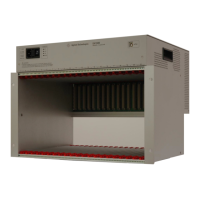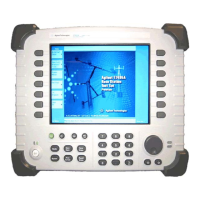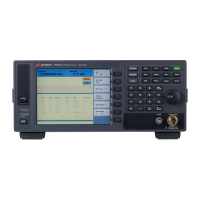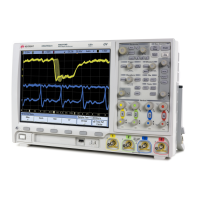Chapter 1 49
Preparing for Use
Writing Your First Program
• Select the instrument mode with INST:SELect. Set the mode setup
for things like your desired communications standard, channel
frequency and triggering.
• In the program, execute an instrument preset (*RST) and select
single-sweep mode (INITiate:CONTinuous OFF) before setting other
instrument functions.
• Use the MEASure group of commands, described in Chapter 5 ,
“Language Reference”. MEASure commands make the measurement
using the standard procedure and limits. You can alter some of the
measurement defaults by using commands in the SENSe:<meas>
subsystem. Once altered, use the CONFigure, FETCh, READ, and
INITiate commands to perform the measurements.
• The instrument can return different types of results for a particular
measurement. These results are described in the language reference
section on the MEASure group of commands.
• Execute the desired commands in logical order. Multiple SCPI
commands can be included on one line. See “SCPI Language Basics”
on page 61.
File Naming Rules
File names for storing instrument states or other data files in the
analyzer should follow pc conventions.
• They can be up to eight characters long. In addition, they can have a
file extension up to three characters long. The analyzer can assign
the extension.
• They are not case sensitive. It does not matter whether you use
upper case or lower case letters when you enter them.
• They can only contain the letters A through Z and the numbers
0 through 9.
• They cannot contain any special characters (except the period that
separates the name from the extension).
• They cannot be identical to the name of another file in the same
directory.

